hyperfemininity bullshit, control, and conservatism
the first episode of my conservatism series beginning with a cultural dive on hyperfeminity
Last week, my roommate sent me our bills for the month. A strong, staggering, unescapable, and absolutely uncalled for 75£ per person—for gas alone. And here's the plot twist. We don't turn on the heater. We don't cook either. We live like Victorian kids wrapped in three layers, surviving on toast and vibes. And that got me thinking…
What the capital F is going on?
Me: How is it the same as last month when we didn't even turn on the heater ?????
Hiba: I need to create time to investigate this… but I'm a corporate slaveeee
Me: I'll look into it as soon as I get free cause what the actual ****
Of course I forgot to look into it (sorry Hiba, this is me promising, on record, I will now). But instead of becoming a domestic gas detective, I did what any self-respecting over-thinker in chic overpriced should would do. I put on my finance bro thinking cap and started researching.
Turns out, the average inflation rate per year is around 2%. Cute and arguably manageable. But after Covid? Inflation said “go big or go home” and rose to its highest level since 1981. 2022 saw an 8% increase. Less cute and definitely less manageable. Rent, especially in London, became a dystopian horror story. Gas prices soared. Food turned from a necessity to a luxury, like oat milk lattes or emotional stability. I know this because I lived it. It got so bad, it literally drove me out of the country.
Economic crisis are not short of social consequences. My friends and I suffered from redundancy at work and unemployment—I like to think of it as a career detour and a skill expanding opportunity as some of us worked as waiters and bartenders, the rest of us took on a stay-at-home daughter position. We also experienced changes in household expenditure patterns, social exclusion, increased purchases of “reduced to clear” foods, , and deep philosophical debates about whether we could afford hummus that week. (Spoiler: we couldn’t.)
And then I asked myself the real question.
What happens when your bank account is bleeding, your bills are booming, and your future looks like the inside of a closed Zara store during lockdown—full of potential and uncertainty?
As the economy tanks, conservatism banks YAAAAY—at least according to this UCLA paper (seriously, add it to your bedtime reading)!
But, if you're in a rush, then this is what I'm here for! The paper argues that collective crises have long-lasting effects on beliefs, politics, social policies, risk taking, and trusting intuition. Basically, if you suffer through a crisis in your formative years—hello, that’s me—it rewires your brain and your outlook on life. Permanently. How cute is that?
I say all this as Trump announced a tariff increase on literally all countries—set to take effect on April 5. Timing? Impeccable. Chaos? Eternal.
I was telling a friend recently, “I don’t speak fluent finance bro, but I do know when the market’s down, you invest—or buy gold.”
Me? Maybe another vintage Chanel Karl Lagerfeld piece. Does it function like gold? Maybe not. But does it bring joy and retain value in the form of Instagram clout? Absolutely.
And while I’m not an economist or a political scientist (thank God), I am—in my own fabulous, slightly unstable corner of the world—a fashion journalist. So let’s talk about what this economic mess means not just for your energy bill, but for your wardrobe, your politics, and your identity.
Because if we’re going down with the economy, we might as well do it in a trendy trench coat.
Capitalism, consumerism, and conformity, other else known as the 3 big Cs
I couldn’t help but wonder… if capitalism is the system, then is my Toteme blazer the uniform?
Hot take? Money is inherently right wing. Think about it. The wealthy aren’t lining up to redistribute their riches. They profit from systems built to protect capital—not people. Right-wing ideology clings to tradition, hierarchy, and a curated sense of “order”—which, in fashion, translates to exclusivity, elitism, and the holy grail of “if you know, you know.” (Spoiler: if you don’t know, you’re not invited.)
About capitalism. Capitalism thrives on the illusion of agency—the belief that systemic issues such as inequality, precarity, or gendered labour can be solved through individual effort, hustle, or personal reinvention. It whispers, “You got this,” while charging you £65 for a serum. In this world, fashion doesn’t just express who you are—it advertises that you’re winning. I mean let’s be honest, all trends are inherently tied to consumerism. The clean girl spends £300 a month on looking “effortless,” the tradwife makes the finest pasta from scratch in a ballgown, and the office siren seduces capitalism in six-inch heels and a fitted blazer. Capitalism doesn’t sell trends—it sells identities. And plot twist: every single one comes with a shopping list.
For some, clothing is just fabric—a little cotton curtain between your body and the world. For others, they’re declarations, aspirations, therapy. And the thing about fashion trends is as much as we love to play dress-up, they are mirrors to the socioeconomic happenings, and the clothes we choose to wear are merely a comment on where we stand. We take what's applicable and ditch the rest. Up until recently.
Fashion becomes our coping mechanism. Our armour. But recently, rather than inciting critique or resistance, they redirect the conversation, distracting us from it. Instead of asking why burnout, exploitation, or inequality exist, we ask how to better present ourselves within that system. We ask what alternative milk for our matcha makes us look most unbothered while capitalism crushes us. We try to out-style burnout, out-palette poverty, out-contour inequality. We don’t rebel—we rebrand. In reality, we’re all just dressing for survival.
Enter: conservatism—the ideological scaffolding for the soft prison of conformity. It’s the warm blanket in the chaos. It says, “Don’t worry, just follow the script.” And during a crisis, like, say… a global pandemic, that script starts to feel comforting. The fluff around conformity is romanticising the social shifts happening and understanding the economic dynamics of needing to assert one's self in a secure environment; as in a time of calamity, panic and fear is ineludible, which ultimately lays the foundation for conformity. Gender roles, domestic aesthetics, corporate dress codes—they’re all part of the lookbook. But let’s not be fooled. A smoky eye and a bodycon skirt might scream corporate baddie, but they ultimately reinforce obedience. These trends are not subversive—they’re soothing. They're the romantic packaging of compliance, cloaked in empowerment.
So maybe the real question isn’t what are we wearing—but why do we feel we need to dress like we’re okay?
Deep Dive
Soren Kierkegaard, a danish philosopher, said “Truth always rests with the minority, and the minority is always stronger than the majority, because the minority is generally formed by those who really have an opinion, while the strength of a majority is illusory, formed by the gangs who have no opinion — and who, therefore, in the next instant (when it is evident that the minority is the stronger) assume its opinion… while truth again reverts to a new minority”.
Post-COVID, fashion didn’t go feral. It went tidy. In a time of collective panic, fashion turned to control, wealth, nostalgic hyper-femininity, and aesthetics rooted in discipline. Office Siren, Trad Wife, Clean Girl meets Quiet Luxury might be at different extremities, but at their core, they are equally alike. They entice the idea of mastering one's role within a clearly defined system and the creation of a “hyperfeminine high-value” women—whatever that is. They act as subtle performances of ideology, particularly those that intersect with capitalism and right-wing values. Where the tradwife retreats to the domestic sphere, the office siren conquers the workplace—and the clean quiet luxury girl? She dictates how to live your life: Alo (and a fur coat), pilates, matcha. Ultimately, they uphold a polished, controlled version of womanhood that fits within patriarchal comfort zones.
Clean girl, quiet luxury, pilates princess, and a matcha ritual
The clean girl aesthetic is a minimalist, wellness-inflected look centred on glowing skin, slicked-back hair, subtle makeup, minimalist gold jewellery, and neutral-toned activewear or basics. It embodies "effortless" beauty, but relies heavily on discipline, grooming, productive femininity, and access to products and time—making it both aspirational and exclusionary, but ultimately about idyllic conformity. Yet behind its simplicity lies an infrastructure of wealth—facials, fitness routines, skincare, and time. Socially, it echoes neoliberal values of self-optimisation and individual responsibility, where external polish signals inner order and success, where looking like you have your life together is equated with moral goodness. In this way, clean girl quietly echoes conservative ideals: routine, order, health, and a sanitised kind of feminine beauty that doesn’t disrupt the status quo.
Whilst clean girl is the focus on beauty and wellbeing, quiet luxury is a fashion aesthetic defined by understated elegance, muted colour palettes, high-quality materials, and a rejection of logos or branding. Often associated with elite brands like The Row, Loro Piana, or Brunello Cucinelli, it reflects old-money sensibilities and class separation through subtlety. There also came the return of fur which revives symbols of old-money glamour, tradition, and visible class hierarchy. It also acts as a subtle pushback against progressive values like animal rights and sustainability, framing indulgence and elitism as timeless rather than taboo. It conveys wealth not through ostentation but through the knowledge that only insiders can recognise its value—reinforcing exclusivity, hierarchy, and detachment from mass-market consumerism. Championed by brands like The Row, is a soft-spoken but deeply political aesthetic. This look rejects obvious branding in favour of exquisite tailoring, natural fabrics, and muted palettes. It doesn’t flaunt wealth—it encrypts it. This kind of fashion becomes a way to assert class status without inviting critique, reflecting the conservative fantasy that true wealth is modest, restrained, and refined. After COVID exposed economic inequality in sharp relief, quiet luxury offered the elite a way to visually opt out of the chaos while reinforcing hierarchies. It is the aesthetic of the ruling class shielding itself in silence.
Both of these trends are not inclusive. When you look them up, there is a certain look—think: race, body, diet—that's tied to it. On the opposing side, when you lean left, there is more personality, weirdness, colour, and authenticity within style. This has been seen with the more short-lived trends, coastal grandma, gorpcore, boho chic,…
I think of Lynn Yaeger, a journalist and a contributing editor to Vogue, who unapologetically has her own personal style. It is a defiant love letter to individuality in a world obsessed with trends and conformity. With her powdered face, crimson lips, and vintage-layered ensembles, she dresses like a character from another era—unbothered by fashion's fleeting obsessions. While the industry pivots toward minimalism and "quiet luxury," Yaeger doubles down on eccentricity, proving that true style isn't about fitting in but about standing unapologetically apart.
I also think of 2010 maximalism
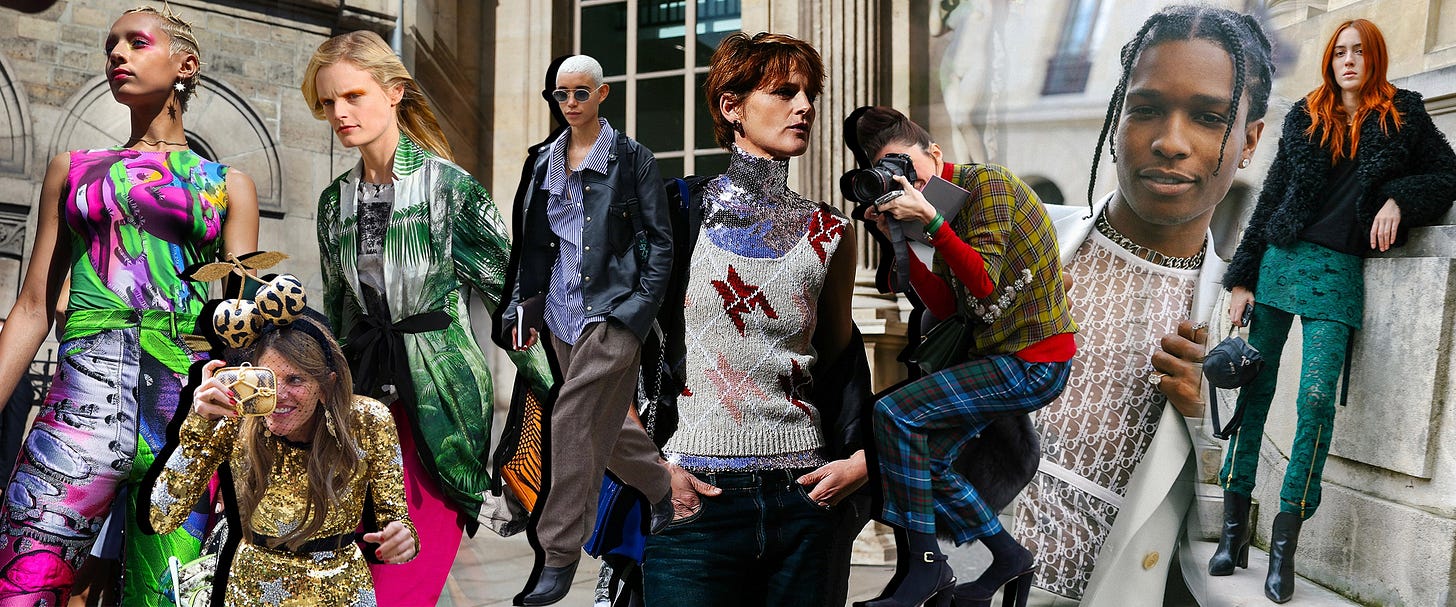
and 2016 full glam makeup.
They were eras of excess that celebrated self-expression at full volume—think clashing prints, statement accessories, contour kits, and glitter cut creases. In a world that now leans toward normcore, quiet luxury, and TikTok-approved minimalism, these aesthetics feel almost rebellious in retrospect—somehow engaging with them to date could be the another alt. They thrived on more is more, somehow rejecting the pressure to blend in. You could layer however much you like, or have a neon yellow on your eyelids and it was okay. At their peak, they offered a kind of armour—loud, curated, and unapologetically artificial—that stood out in sharp contrast to today’s obsession with looking “natural,” effortless, and algorithm-friendly.
There is something morbid about Gen Z—a generation that is monetarily struggling the most in comparison to it's precursory demographic—wearing Loro Piana? And whilst luxury has gone stealth, flexing a $6,000 cashmere sweater that only the right people recognise during a recession is rather interesting. It’s not just about looking rich, it’s about being in the know—a soft power move that trades flash for exclusivity. And all of that wrapped in neutral shades of conformity.
There is something about the grey aesthetic—think stone-toned interiors, tailored blazers, slate manicures, brushed steel water bottles—that became the unofficial uniform of restraint. It's clean, controlled, and chic in a way that doesn’t draw too much attention. But here’s the kicker: that’s exactly the point.
The world has gone grey (and I'm not talking about my feelings…this time at least)
Grey doesn’t provoke. Grey doesn't shout. It sits quietly in the corner and complies. After all, seriousness comes in one shade and it's grey.
In a chaotic world, grey offers structure. In fashion, grey is a symbol of safety, of not taking too much risk. And in politics? Grey is neutrality—neutrality that often sides with the status quo. A colour that neither commits to black nor white. A visual manifestation of compliance. Of professionalism. Of “fitting in without standing out”. It’s the perfect costume for aesthetic conservatism—orderly, subtle, non-threatening. And according to this paper, colour is disappearing form the western world.
It’s no accident that grey is everywhere in aesthetics rooted in control: quiet luxury wardrobes, minimalist interiors, office siren workwear. It blends in with clean lines, structure, and hierarchy—just like the ideologies it’s subtly upholding.
I think of Elle Woods from Legally Blonde.
She was never taken seriously because she wanted to be a lawyer whilst dressing in pink! Unbelievable.
Time for a lil history lesson!
Historically, corporate wear is grey because grey signals neutrality, authority, and conformity—three pillars of traditional workplace culture. After World War II, as men returned to office jobs, the grey flannel suit became a uniform of postwar professionalism. It conveyed seriousness without flash, discipline without individuality. In the 1950s, books like The Man in the Gray Flannel Suit even framed grey as a symbol of the corporate man’s quiet sacrifice—ambitious, loyal, and emotionally restrained.
Colour psychology also plays a role. Grey is neither aggressive like red nor passive like blue. It’s the middle ground, the safe bet. And in a capitalist system that values predictability and control, grey clothing functions like camouflage—blending the individual into the institutional. It's not just a colour; it's a code.
Now about the office siren—an unassuming, but impossible to ignore conservative aesthetic. She’s the hyper-feminine, power-dressing femme fatale of the corporate world. Think 2000s-era pencil skirts, stilettos, silky blouses, tight silhouettes, and smoky makeup. It’s sexy, polished, and deeply performative—a woman using her femininity as both armour and strategy in the workplace, seducing job stability in a suit.
At first glance, the aesthetic might read as empowering. But look closer, and it becomes clear: the Office Siren doesn’t critique capitalism—she glamorises the woman who thrives within it. While it appears empowering, it often diverts attention from the emotional and physical toll of labour, ambition, and burnout. Ultimately, she’s the high-functioning overachiever who makes burnout look like a beauty trend. She doesn’t reject the system; she works it, with a glossy blowout and a killer heel.
And here's where it veers right—quite literally. The sultriness of the aesthetic aligns neatly with conservative ideals of femininity. High heels, smoky eyes, hourglass silhouettes—all visually reinforcing the traditional standard: women should be beautiful, put-together, and desirable, especially in male-dominated spaces. She's ambitious, yes, but still adheres to the visual codes shaped by the male gaze. And that’s the quiet conservative trick—modern empowerment, wrapped in nostalgic submission.
Robert Greene's Art of Seduction denotes a siren is as the ultimate object of desire; with the greatest weapon being physical presence. It lures by creating a sensory experience that’s unattainable. In this case, leaning into corporate eroticism. In some right-wing spaces, this 1990s secretary-meets-CEO fantasy isn’t just accepted—it’s celebrated. She’s the “ideal woman”: driven, beautiful, in control—but not disruptive. She's not here to smash the patriarchy; she's here to out-dress it.
One goes to work and the other stays at home, but they're both slaves to men
During the pandemic, as we all found ourselves homebound and rediscovering the art of cooking, a new aesthetic emerged from the chaos: the tradwife. Short for “traditional wife,” this look champions hyper-feminine, vintage-inspired domesticity—think prairie dresses, aprons, soft curls, and a reverence for homemaking and male financial provision. On the surface, it radiates nostalgia and simplicity, yet beneath the lace and linen lies a clear alignment with conservative values: traditional gender roles, submission, and anti-modern sentiments. While some embrace it as a lifestyle choice, it’s also become an aesthetic battleground for right-wing ideology.
But its surface charm often conceals a deeper alignment with right-wing ideology, particularly among influencers who pair vintage aesthetics with anti-modern, anti-feminist messaging. The tradwife doesn’t just style herself in the past—she advocates for it.
But here’s the kicker: being a tradwife isn’t just about baking sourdough and curating the perfect Instagram feed—it’s a luxury performance available only to those with time and money. Take Nara Smith. Married to Tumblr’s loved Lucky Blue Smith, she rose from her modelling days to command social media with ASMR-style cooking clips and chic domesticity that landed her deals with Marc Jacobs. Her homemaking is not just romanticised, but monetised.
Here’s where it gets more complex and where I present my she's an exception not the example. Nara is of Mosotho and German descent, and Black women have historically have been held to impossible standards and economic necessity that rarely afforded them the luxury of not working. The image of the stay-at-home wife—soft, supported, and leisurely—has traditionally been coded as white and upper-class. So Nara monetising that space isn’t necessarily advocating for regressive gender roles—it’s reclaiming a historically exclusive lifestyle. In her defence, she never said showed support to quitting the corporate world and relying on a man. Moreover, people come after the Smith's assumed religion, blaming their lifestyle on Mormon culture—but the Smiths never explicitly said they were practicing Mormons nor will their kids will be raised that way.
Then there’s Hannah Neeleman, known as Ballerina Farm on Instagram. With her gaggle of blonde kids, hand-churned butter, and a picturesque farm set against mountain backdrops, she embodies tradwife perfection—complete with a $20,000+ La Cornue stove and a team of dedicated farm employees ensuring every detail of her slow-living dream is flawless. Unlike Nara, Hannah’s narrative leans even more into traditional submission—she traded a ballet dream for a life defined by early marriage, motherhood to eight, and a controversy involving a “traditional kitchen” birthday gift from her husband. Their background as practicing Mormons underscores that, for Hannah, this aesthetic is as much about returning to religious and cultural roots as it is about domestic charm. Nonetheless, she is the daughter-in-law to JetBlue founder, meaning this lifestyle is for those who can afford extra support to attain it, not those who need to make bread from scratch because that's the only way they can afford it. The latter never being glamourised nor applauded.
Navigating this discourse is tricky. No matter where you swing on the pendulum, there's always the risk of being accused of undermining feminist progress—or being out of touch with economic reality. But in all cases, this trend is a sexist and economic commentary swaying into conservative values.
Maybe fashion doesn’t lie, but it does find creative ways to tell the truth. And in 2025, the truth is this: we’re all just dressing the part, hoping we look expensive enough to survive the collapse.
Phew! Thanks for reading! This is the first episode in my Return To Conservatism series. Next up I'll be dissecting brand and celebrity rebrands, so make sure to subscribe so you don't miss it! YAAY!
2 Seconds of Housekeeping!
Cosmopolitcs is an independent column created by Serene Hassouna, and it thrives thanks to the support of its readers. If you’d like to help sustain the column, you can contribute a one-time or monthly pledge via Buy Me A Coffee with support starting at just £1. If you enjoyed this article, please consider subscribing for more musings on life, love, and some more self-documented essays and realisations.



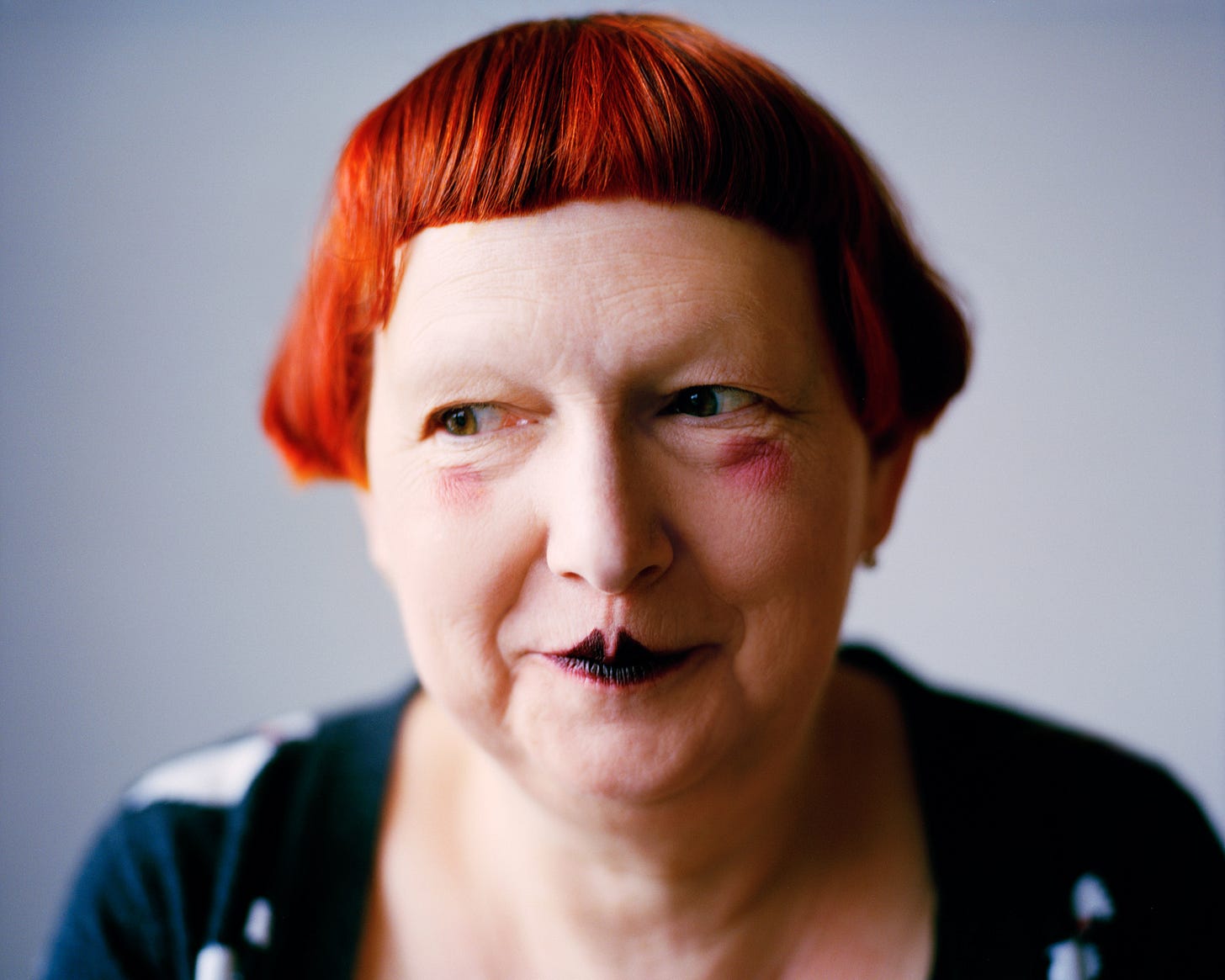
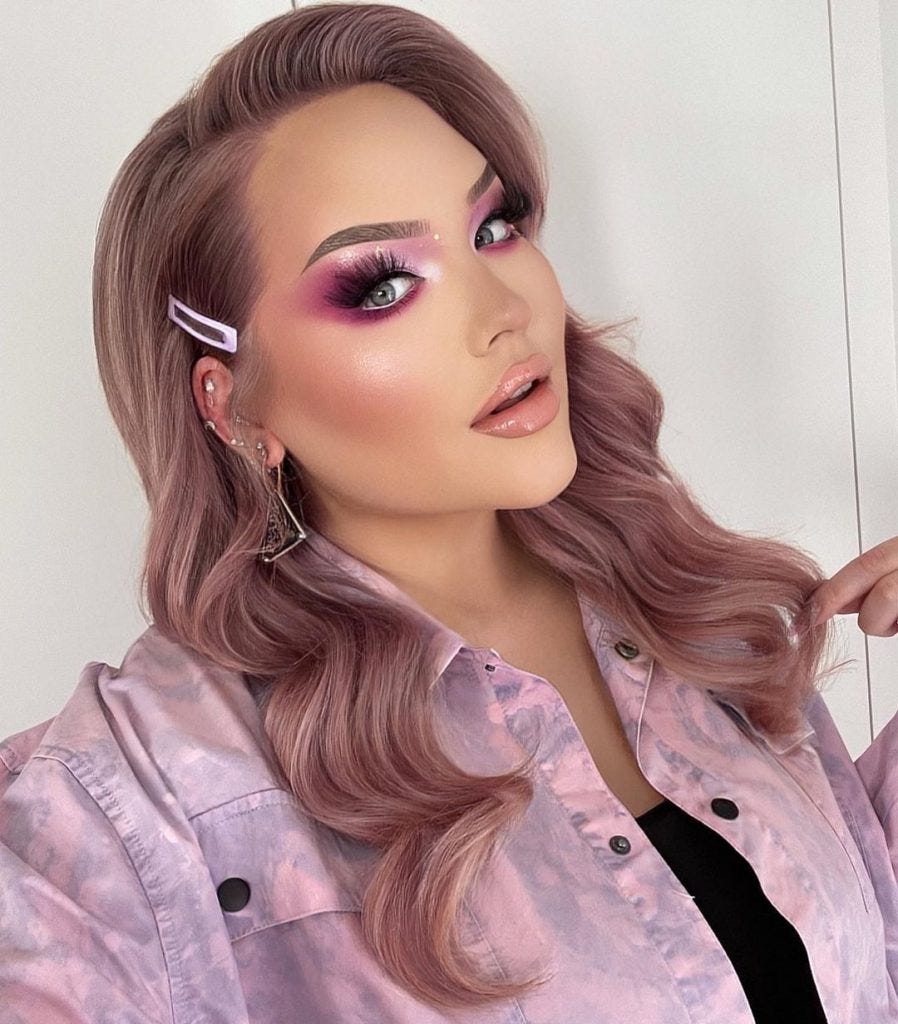
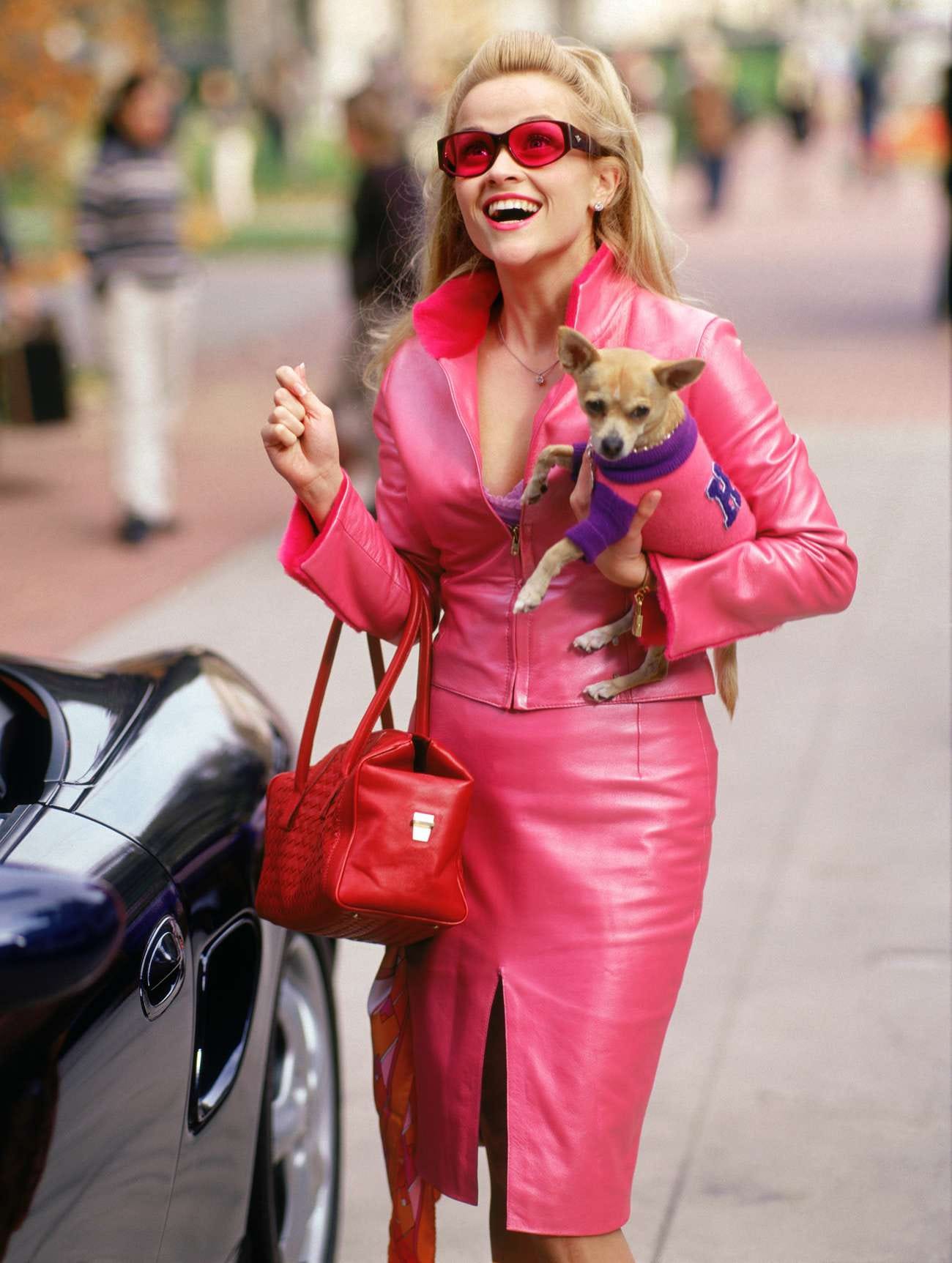
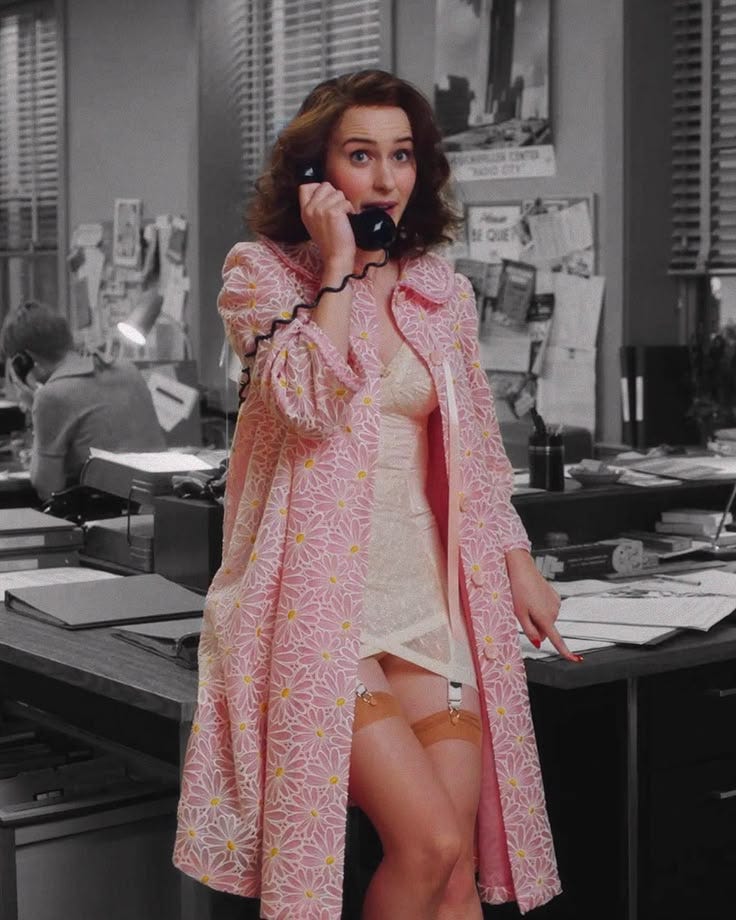

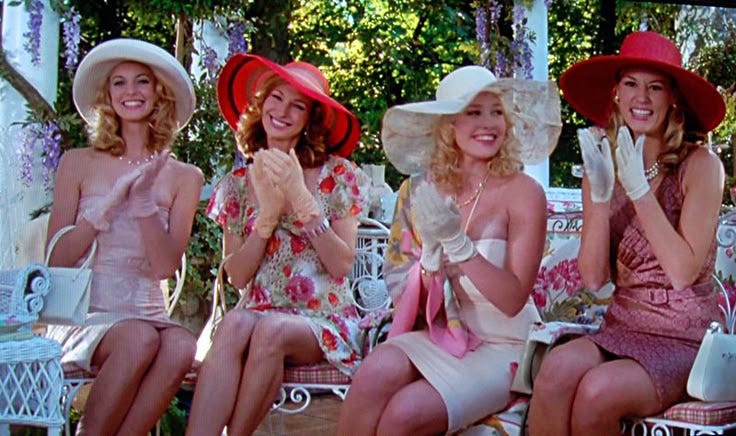
I literally just had a discussion about this with my friends and you basically just put our thoughts into words. And more eloquently of course. Thank you, it was such a nice read !🙌
Serene!!!! This article was immaculate. So well articulated and I loved the way you touched on the nuances with case studies. Don’t mind me restacking full on paragraphs 😭